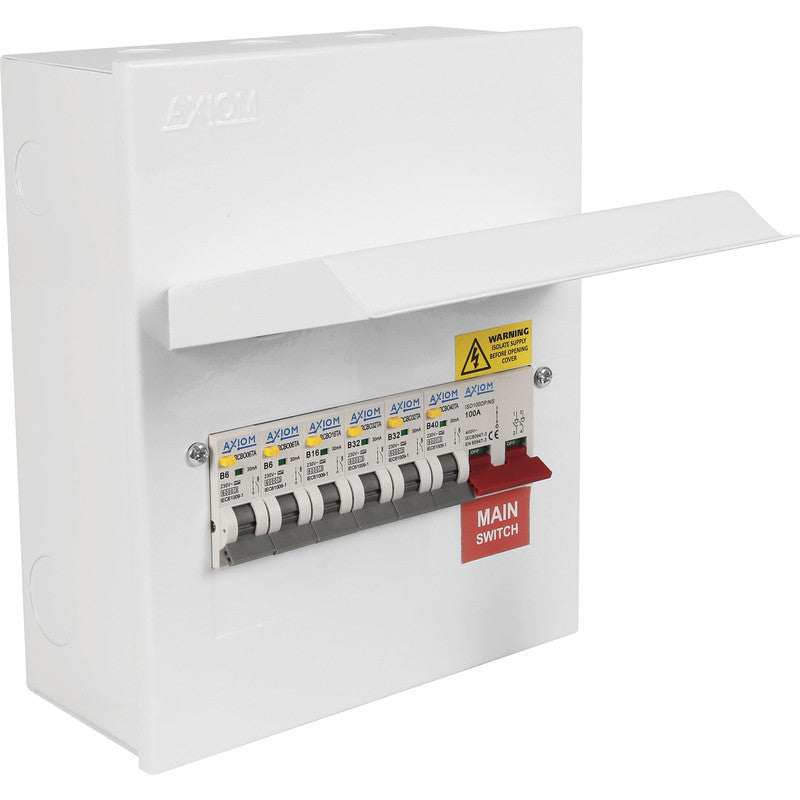The Duty of Customer Units in Reliable Energy Management Equipment
Customer units are essential to effective energy management systems, offering as the main circulation points for electric power within structures. The arrival of clever modern technologies has further improved their functionality, enabling for real-time data monitoring and nuanced power intake evaluation.
Comprehending Consumer Devices

Understanding the role of consumer devices starts with acknowledging their important feature in guarding electrical systems. By separating mistakes within certain circuits, consumer devices avoid prevalent blackouts and potential fire dangers. This isolation is accomplished with the use of breaker that journey or integrates that impact when a mistake is discovered, thereby removing the electrical flow to the affected circuit.
In addition, consumer systems facilitate the orderly distribution of power, enhancing the efficiency of power use. They permit the systematic administration of electrical loads, which can be especially crucial in commercial and industrial settings where need can vary substantially. Correctly conserved consumer systems add to the longevity of electric systems and assist in reducing downtime triggered by electric failures, ultimately sustaining the smooth procedure of energy-dependent centers.
Smart Technologies Combination

An essential advantage of smart customer units is their ability to utilize advanced formulas and artificial intelligence for anticipating analytics. This enables preemptive modifications based upon usage patterns, weather report, and various other variables, considerably increasing general effectiveness. Additionally, smart consumer devices assist in need feedback programs, where power use can be dynamically adjusted throughout top durations to support the grid and minimize costs.
The assimilation of sustainable energy sources, such as solar and wind, is also streamlined through wise consumer devices. By wisely taking care of the intermittency of these sources, these devices make sure a reliable and balanced power supply. In addition, wise consumer devices boost customer interaction by giving comprehensive insights and remote capabilities with mobile applications, fostering an extra positive method to energy conservation and sustainability.
Tracking Energy Consumption
Building on the abilities of wise innovations assimilation, keeping an eye on energy intake comes to be a crucial emphasis within power monitoring systems. Effective surveillance acts as the structure for determining energy inadequacies and executing restorative actions. By leveraging innovative metering facilities (AMI), real-time information on power usage can be gathered at granular levels, supplying beneficial understandings right into intake patterns and peak need periods. This data-centric strategy makes it possible for both customers and power managers to make educated decisions targeted at decreasing waste and enhancing total effectiveness.
Smart meters and Web of Points (IoT) devices play a crucial role in this tracking procedure. These tools can track energy use in real-time, sending data to central systems for evaluation.
The assimilation of these technologies not just equips consumers with comprehensive information regarding their power use but additionally supports utility service providers in handling tons circulation extra efficiently. Inevitably, continual and exact monitoring is vital for accomplishing energy efficiency, expense savings, and sustainability goals within power management systems.
Optimizing Device Use

One reliable approach includes recognizing height and off-peak hours to shift energy-intensive activities, such as laundry or dishwashing, to times when energy demand is lower. This not just lessens pressure on the grid however likewise profits from lower energy tariffs. Furthermore, integrating artificial intelligence formulas enables predictive upkeep, guaranteeing home appliances run at ideal performance and extending their lifespan.
Power monitoring systems can likewise incorporate user-specific choices and behaviors to customize appliance usage schedules. For instance, wise illumination systems can change illumination based on tenancy and all-natural light accessibility, while cooling and heating systems can maintain comfort degrees without excessive energy use.
Promoting Sustainability
Promoting sustainability within power administration systems includes not just improving effectiveness yet additionally fostering ecologically responsible techniques. Customer systems are essential to this process, as they give real-time information and control devices that enable individuals to keep track of and reduce their energy usage. By leveraging advanced innovations, consumer units can determine energy-saving chances and assist in the integration of renewable power sources like solar and wind power.
One essential facet of promoting sustainability is informing consumers on the advantages of liable power usage. Through comprehensive understandings offered by customer units, individuals check that can make enlightened decisions that lessen their carbon footprint. These devices can advise optimal times for running high-energy home appliances based on grid demand and renewable power availability, consequently minimizing dependence on fossil fuels.
Furthermore, consumer units support the adoption of wise grid modern technologies, which improve the overall performance and reliability of power circulation. By making it possible for two-way communication in between customers and utility suppliers, these systems can dynamically adapt to power needs, lowering waste and promoting the usage of sustainable power techniques.
Final Thought
Consumer units, as essential parts of power management systems, dramatically enhance electrical safety and security and efficiency within structures through circuit protection and clever technology combination. Furthermore, the consolidation of renewable energy sources promotes sustainable techniques, adding to decreased overall energy usage and lower carbon impacts.
Breakthroughs in wise modern technologies have actually reinvented the capabilities of energy management systems, specifically through the combination of smart consumer units.Structure on the abilities of smart technologies integration, site link keeping track of power usage becomes an important focus within power administration systems.Reliable appliance use optimization is an important component of power monitoring systems, aiming to boost efficiency and minimize unneeded energy intake.Consumer systems, as essential parts of power management systems, considerably improve electrical safety and effectiveness within buildings via circuit protection and smart innovation assimilation. In addition, the consolidation of eco-friendly power resources advertises lasting techniques, contributing to lowered overall energy usage and lower carbon footprints.